Buenos Aires

The Buenos Aires Metropolitan Cathedral, located in Plaza de Mayo, is the main Catholic church in Buenos Aires. With a neoclassical façade and grand interior, it is a significant historical and religious site, housing the tomb of General José de San Martín, Argentina's liberator.
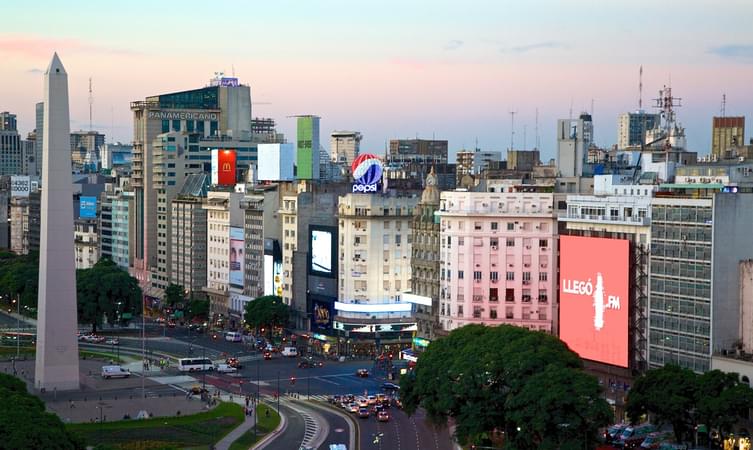
Avenida Corrientes, one of Buenos Aires' most iconic streets, pulsates with the vibrant energy and cultural richness that defines Argentina's capital. Known as "The Street that Never Sleeps," this bustling avenue is a dynamic blend of historic charm and modern flair, making it a must-visit destination for both locals and tourists.
Stretching for approximately 70 blocks, Avenida Corrientes runs through the heart of Buenos Aires, from the central business district to the charming neighborhood of Villa Crespo. It is famously lined with theaters, bookstores, cafes, and restaurants, each contributing to the avenue's lively atmosphere. The street is a cultural hub, reflecting the artistic spirit and literary legacy of the city.
One of the most notable aspects of Avenida Corrientes is its theaters. The avenue is home to some of Buenos Aires' most prestigious and historic theaters, such as the Teatro Gran Rex, Teatro Ópera, and the legendary Teatro San Martín. These venues host a variety of performances, from Broadway-style musicals and classical concerts to avant-garde plays and tango shows. The vibrant theater scene on Avenida Corrientes has earned it the nickname "The Broadway of Buenos Aires," and attending a performance here is a quintessential Buenos Aires experience.
Obelisk
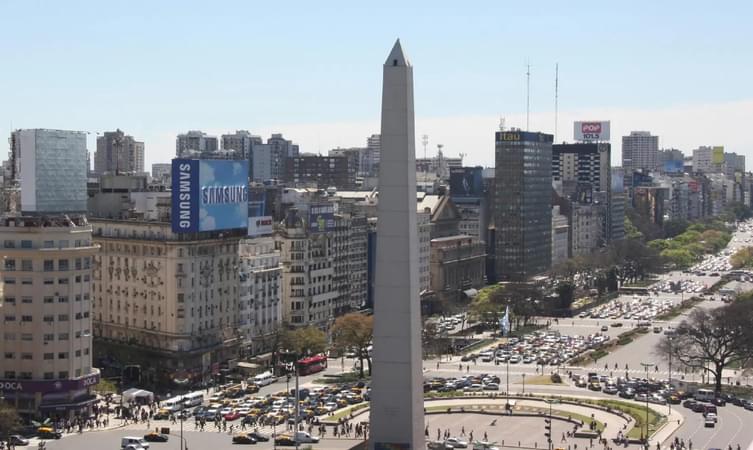
The Obelisk of Buenos Aires, a prominent city landmark, stands tall in the heart of the bustling capital at the intersection of Avenida 9 de Julio and Avenida Corrientes. Erected in 1936 to commemorate the 400th anniversary of the city's first founding, this towering monument rises to 67.5 meters (221 feet), making it a striking feature of the city skyline.
La Boca
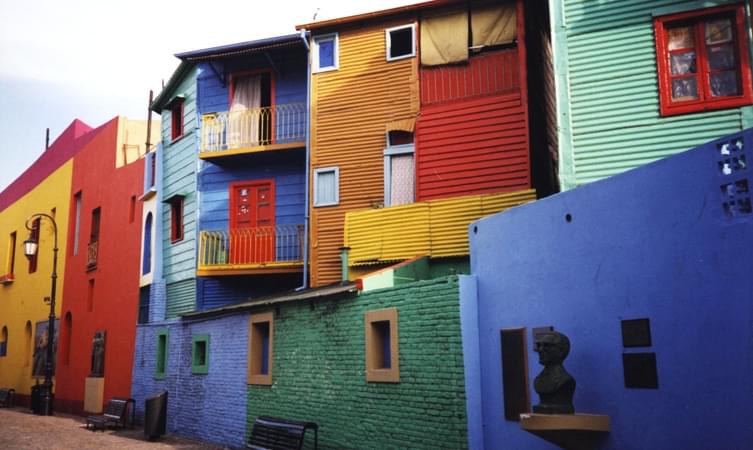
La Boca, a vibrant neighborhood in Buenos Aires, Argentina, pulsates with a distinct energy and cultural richness that captivates visitors from around the world. Nestled along the banks of the Riachuelo River, this colorful barrio is famed for its eclectic mix of art, history, and passion for football.
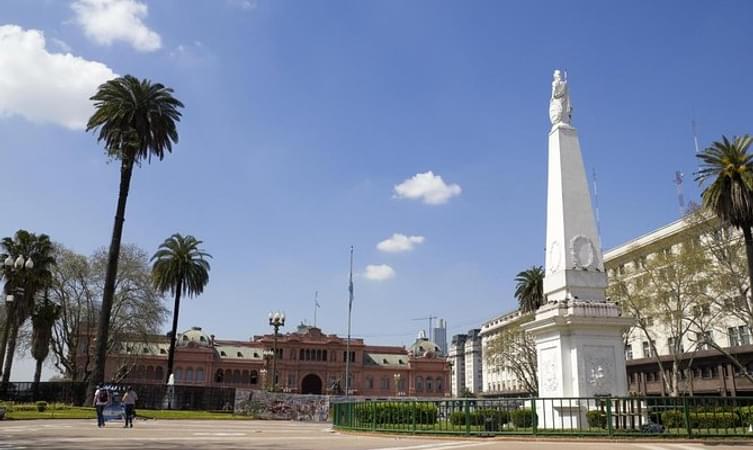
Plaza de Mayo, the historic heart of Buenos Aires, Argentina, is a significant political and cultural landmark. Surrounded by iconic buildings like the Casa Rosada and the Metropolitan Cathedral, it has been the site of pivotal events in Argentine history. The square is a vibrant hub for demonstrations, celebrations, and gatherings, embodying the spirit and history of the nation.
San Telmo
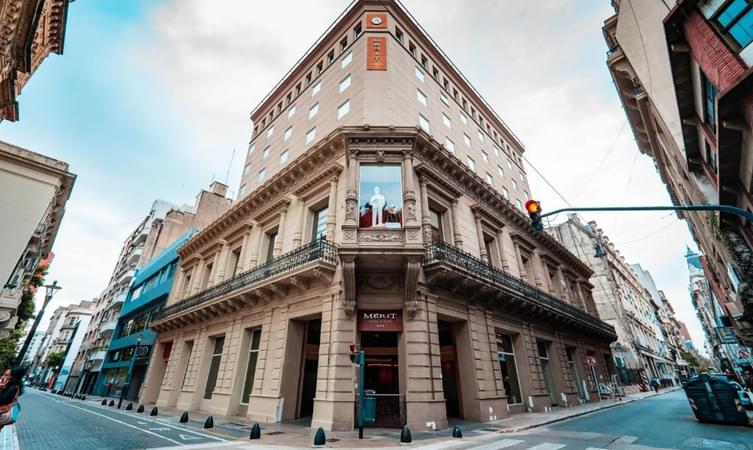
San Telmo is a historic neighborhood in Buenos Aires, Argentina, known for its cobblestone streets, colonial architecture, and vibrant arts scene. Famous for its antique shops, tango parlors, and the lively Sunday market, San Telmo captures the cultural essence and bohemian spirit of the city.
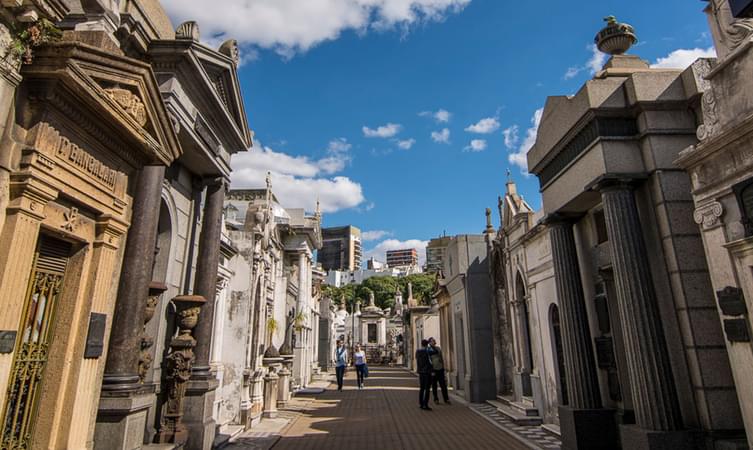
Cementerio de la Recoleta in Buenos Aires, Argentina, is not just a final resting place; it's a captivating open-air museum of history, art, and culture. Nestled in the heart of the upscale Recoleta neighborhood, this iconic cemetery is a testament to the city's rich heritage and the diverse array of individuals who shaped its identity.
As visitors pass through the cemetery's imposing gates, they are transported into a world of grandeur and elegance. Lush tree-lined pathways wind through rows of ornate mausoleums, each one more elaborate than the last. The architecture reflects a variety of styles, from neoclassical and art deco to gothic and baroque, showcasing the wealth and influence of Argentina's elite families.
One of the most striking features of Cementerio de la Recoleta is its collection of elaborate monuments and sculptures. Intricately carved angels, cherubs, and other religious symbols adorn the tombs, while statues of prominent figures stand sentinel over the hallowed grounds. Every corner of the cemetery tells a story, offering a glimpse into the lives and legacies of those interred within its walls.
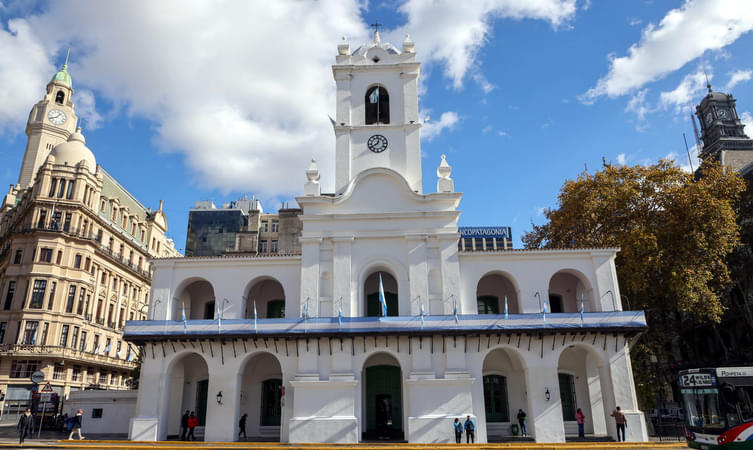
The Cabildo of Buenos Aires, located on Plaza de Mayo, is a historic colonial building that once served as the town council during Spanish rule. Constructed in the early 17th century, it played a crucial role in the May Revolution of 1810, which led to Argentina's independence. The building features Spanish colonial architecture with a central bell tower and arched galleries. Today, it houses the National Museum of the Cabildo and the May Revolution, showcasing artifacts and exhibits related to Argentina's colonial history and struggle for independence, making it an essential visit for history enthusiasts.
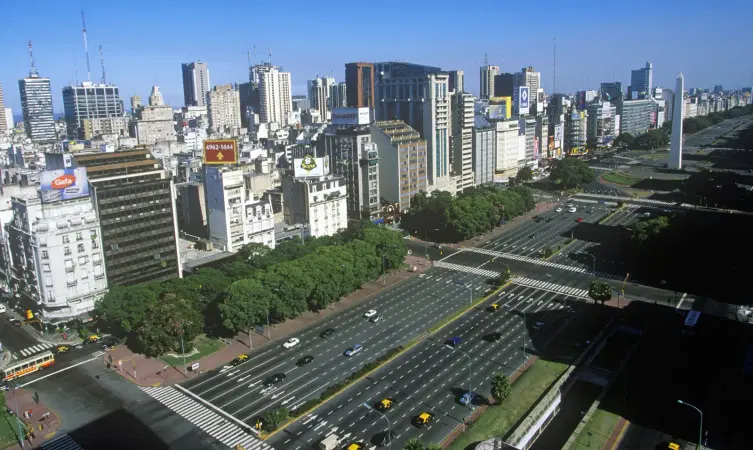
9 de Julio Avenue, located in Buenos Aires, Argentina, is one of the widest avenues in the world, spanning up to 140 meters (459 feet) across. Named to commemorate Argentina's Independence Day on July 9, 1816, the avenue is a central artery in the city's bustling downtown area. Its construction began in 1937 and has since become a symbol of Argentine pride and modernity.
.jpg?w=753&h=450&dpr)
Puerto Madero, a revitalized waterfront district in Buenos Aires, Argentina, stands as a symbol of urban transformation and modernity. Once an obsolete dockland area, it underwent a remarkable redevelopment starting in the 1990s, transforming into one of the city's most vibrant and upscale neighbourhoods. The project aimed to rejuvenate the old port while preserving its historical essence, resulting in a harmonious blend of old and new architecture.
Other Attractions

Avenida Corrientes, one of Buenos Aires' most iconic streets, pulsates with the vibrant energy and cultural richness that defines Argentina's capital. Known as "The Street that Never Sleeps," this bustling avenue is a dynamic blend of historic charm and modern flair, making it a must-visit destination for both locals and tourists.
Stretching for approximately 70 blocks, Avenida Corrientes runs through the heart of Buenos Aires, from the central business district to the charming neighborhood of Villa Crespo. It is famously lined with theaters, bookstores, cafes, and restaurants, each contributing to the avenue's lively atmosphere. The street is a cultural hub, reflecting the artistic spirit and literary legacy of the city.
One of the most notable aspects of Avenida Corrientes is its theaters. The avenue is home to some of Buenos Aires' most prestigious and historic theaters, such as the Teatro Gran Rex, Teatro Ópera, and the legendary Teatro San Martín. These venues host a variety of performances, from Broadway-style musicals and classical concerts to avant-garde plays and tango shows. The vibrant theater scene on Avenida Corrientes has earned it the nickname "The Broadway of Buenos Aires," and attending a performance here is a quintessential Buenos Aires experience.
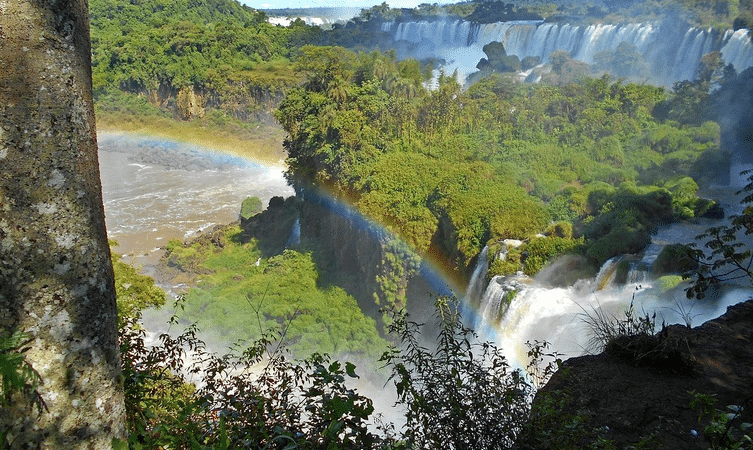
Salto Bernabé Méndez is a picturesque waterfall located within the Iguazu National Park on the border of Argentina and Brazil. Part of the Iguazu Falls system, it stands out for its striking beauty and powerful flow. The waterfall is named in honor of Bernabé Méndez, a park ranger who dedicated his life to preserving the natural beauty of the area. Surrounded by lush rainforest, Salto Bernabé Méndez offers visitors stunning views and the chance to experience the raw power of nature up close. It is a highlight for those exploring the breathtaking Iguazu Falls, one of the world's most famous natural wonders.
Iguazu Falls
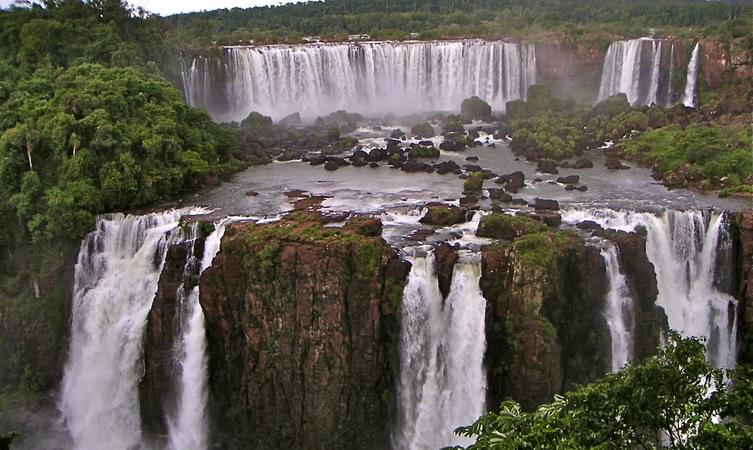
Iguazu Falls, located on the border of Argentina and Brazil, is one of the most breathtaking natural wonders in the world. The Argentine side, within Iguazú National Park, offers a more immersive experience with numerous trails and walkways that allow visitors to get close to the cascading water. The falls consist of around 275 individual drops, with the most impressive being the Devil's Throat, a U-shaped waterfall plunging 80 meters. Surrounded by lush subtropical rainforest, the area is rich in wildlife, including toucans, coatis, and butterflies. Iguazu Falls is a UNESCO World Heritage site, attracting millions of visitors annually.

Nestled within the breathtaking landscapes of Argentina's Iguazu National Park lies the awe-inspiring Devil's Throat, a waterfall of unparalleled beauty and power. Renowned as one of the most magnificent natural wonders on Earth, Devil's Throat captivates visitors with its sheer grandeur and raw, untamed energy.
As you approach this majestic spectacle, the thunderous roar of cascading water reverberates through the air, heightening anticipation and excitement. Emerging from lush, verdant rainforest, the mighty Iguazu River plunges dramatically over a precipice, creating a mesmerizing curtain of mist and spray that dances in the sunlight.
Standing on the viewing platforms overlooking Devil's Throat, one is immediately struck by the sheer magnitude of the waterfall. The sight of millions of gallons of water plummeting into the chasm below is both humbling and exhilarating, leaving visitors in awe of nature's immense power and beauty.

Salto Álvar Núñez, also known as Salto del Monday, is a spectacular waterfall located in the Alto Paraná Department of Paraguay, near the town of Presidente Franco.
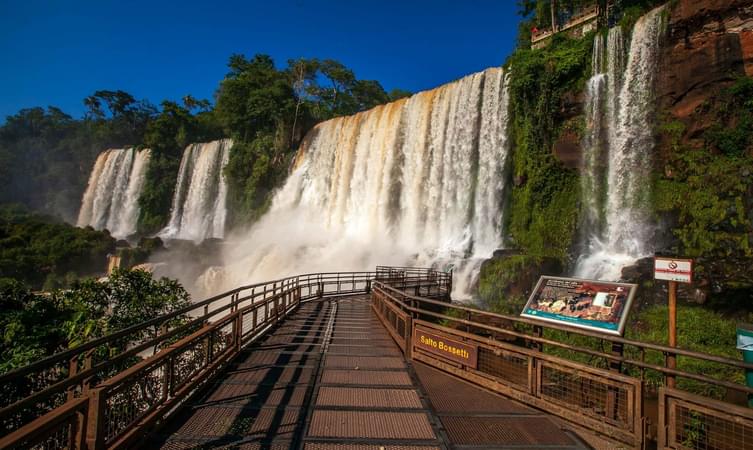
Salto Bossetti Falls in Argentina is a mesmerizing natural wonder located within the majestic Iguazu National Park. The falls cascade down lush green cliffs, creating a breathtaking spectacle of rushing water amidst dense rainforest. Visitors can marvel at the falls' beauty from various viewpoints, immersing themselves in nature's grandeur.

Bosetti Waterfall, located in Argentina's Iguazú National Park, is a stunning cascade amidst lush rainforest. Part of the larger Iguazú Falls system, it offers breathtaking views, abundant wildlife, and vibrant flora. Visitors can explore nearby trails and enjoy panoramic vistas from various observation points, making it a must-see destination for nature enthusiasts and adventurers alike.

Salto San Martín is a stunning waterfall located in Iguazú National Park, Argentina. It is one of the most prominent and powerful waterfalls within the renowned Iguazú Falls system, which consists of approximately 275 falls.

Cementerio de la Recoleta in Buenos Aires, Argentina, is not just a final resting place; it's a captivating open-air museum of history, art, and culture. Nestled in the heart of the upscale Recoleta neighborhood, this iconic cemetery is a testament to the city's rich heritage and the diverse array of individuals who shaped its identity.
As visitors pass through the cemetery's imposing gates, they are transported into a world of grandeur and elegance. Lush tree-lined pathways wind through rows of ornate mausoleums, each one more elaborate than the last. The architecture reflects a variety of styles, from neoclassical and art deco to gothic and baroque, showcasing the wealth and influence of Argentina's elite families.
One of the most striking features of Cementerio de la Recoleta is its collection of elaborate monuments and sculptures. Intricately carved angels, cherubs, and other religious symbols adorn the tombs, while statues of prominent figures stand sentinel over the hallowed grounds. Every corner of the cemetery tells a story, offering a glimpse into the lives and legacies of those interred within its walls.
Salto Mbiguá
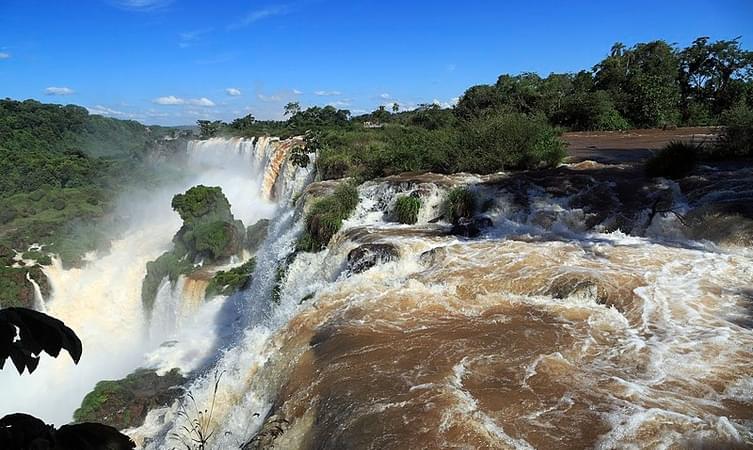
Salto Mbiguá, located in Argentina's Misiones Province, is a breathtaking waterfall nestled amidst lush greenery and towering cliffs. Cascading into a crystal-clear pool below, it offers a serene escape into nature's beauty, inviting visitors to relax, swim, and marvel at the wonders of the natural world.
.jpg?w=753&h=450&dpr)
Salto Dos Hermanas, located in Argentina's Iguazú National Park, is a stunning twin waterfall. Surrounded by lush rainforest, these falls are part of the larger Iguazú Falls system, offering breathtaking views and abundant wildlife. A visit to Salto Dos Hermanas provides an unforgettable experience of nature's beauty and the majestic power of cascading water.
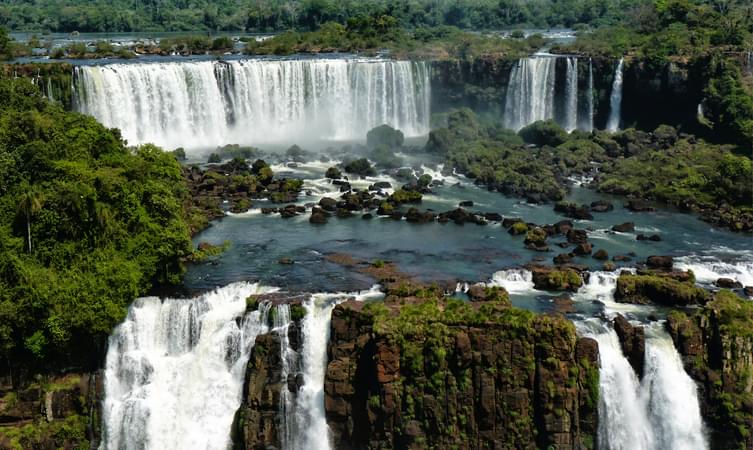
Salto Rivadavia Falls, located in the picturesque Patagonian region of Argentina, is a natural wonder that captivates visitors with its breathtaking beauty. Surrounded by lush greenery and rugged terrain, the falls cascade gracefully over rugged cliffs, creating a mesmerizing spectacle of cascading water and mist.

















